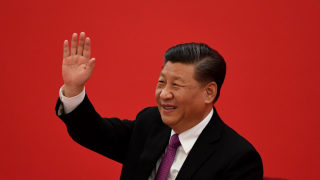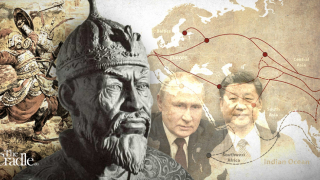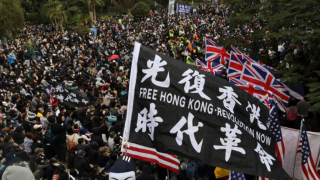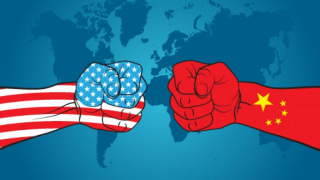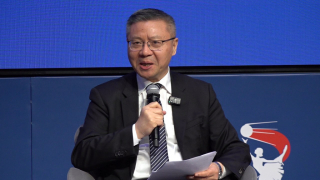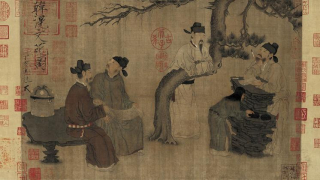Historical analysis of Xinjiang
21.06.2024
The territory commonly called Xinjiang is located in the far north-west of China, and it consists of 640,000 square miles, which is more than one-sixth of China's total land area.
Xinjiang in modern history was incorporated to China in 1759, when Chinese troops under the Qing dynasty defeated Mongol armies after a long and difficult military campaign. The primary ambition of the Qing dynasty in taking control of Xinjiang was not so much that of territorial expansion, but it was in order to eliminate the old Mongol threat.
Xinjiang, which in 1955 was formally founded by Beijing as the Xinjiang Uyghur Autonomous Region, is a mostly desert area and is surrounded and criss-crossed by intimidating peaks. The world's second highest mountain, K2, with a far higher death rate for climbers than Mount Everest, is located partially within south-western Xinjiang and over the border into Pakistan.
Considering the vast size of the Xinjiang Uyghur Autonomous Region there are few large waterways across it, leading to water scarcity. It seldom rains with most of the region having 6 inches of annual rainfall. Temperatures in Xinjiang can vary greatly, with the thermometer reaching 52.2 degrees Celsius in July 2013, and by February 2024 it had plunged to minus 52.3 degrees Celsius.
Xinjiang is bordered by Russia, India, Pakistan, Mongolia and Afghanistan, along with the Central Asian states of Kazakhstan, Kyrgyzstan and Tajikistan. The population of Xinjiang in 2022 was just under 26 million, having marginally declined since 2020. The majority of people in southern Xinjiang are on the edges of the Taklamakan Desert, where they reside in a number of oases, that is areas which have a water supply and where crops can be grown.
Since China regained its independence in the 1949 revolution, living standards in Xinjiang have improved a lot as a result of policies undertaken by Beijing. There has been a sizeable increase in Xinjiang's gross domestic product (GDP), construction of industry, and improvements of the infrastructure.
Factories were built to repair vehicles and machinery, and for the production of cement and textiles, while facilities were set up to extract Xinjiang's rich energy. Xinjiang contains a quarter of China's oil and natural gas reserves and 38 percent of the country's coal. Fresh discoveries of resources such as oil have occurred in recent years. Agricultural output in Xinjiang, especially the production of crops like cotton, had increased due to investments made by Beijing in mechanised equipment, irrigation and fertilisers, and more land was reclaimed for agriculture.
By attempting to closely integrate Xinjiang to the remainder of China, the authorities in Beijing from the 1950s sanctioned the construction of railways, roads, and airports in the region. It was not an easy task because, added to Xinjiang's deserts, much of the rest of the terrain is rugged and rocky. Beijing's programmes indeed benefited Xinjiang's diverse population. People from Islamic groups like Uyghurs and Kazakhs were granted positions in industry or agriculture, and these policies were undertaken at considerable cost.
The Islamic religion itself had expanded from Central Asia to what is today western Xinjiang in the 9th century. Between 700 to 800 years later, Islam was extending to eastern Xinjiang, and by the 17th century the great majority of Xinjiang's population were Turkic-speaking Muslims. The Turkic peoples consist of a wide variety of Muslim groups who inhabit parts of Asia and the fringes of south-eastern Europe.
The Qing authorities in Beijing encouraged the migration to Xinjiang of Han Chinese, the ethnic group which currently comprises over 90 percent of China's population. By the early 1800s, the Han Chinese community in Xinjiang consisted of nearly one-third of the region's then half a million population, with most of the Hans living north of the Tian Shan mountains in northern Xinjiang. The majority of Xinjiang's Muslims in the early 19th century lived south of the Tian Shan mountains, in the Tarim Basin.
Wary of creating discontent by sending Han Chinese to Muslim-inhabited areas, the Qing government discouraged the Hans from moving to the Tarim Basin. Yet a minority of Muslims in the Tarim Basin conducted a series of unnecessary revolts in the 1830s. This compelled the Qing leadership, who started to become slightly suspicious of the Muslim groups, to sanction the entry of Han Chinese to the Tarim Basin.
In 1864 another Muslim rebellion occurred in Xinjiang, led by a Central Asian-born warlord called Yakub Beg. His forces subsequently gained control over almost all of Xinjiang, and the region would not return to China until the late 19th century. In 1884 the Qing government conferred the region with the title Xinjiang.
During the chaotic years after 1864, large numbers of Turkic-speaking Muslims like Uyghurs settled in northern Xinjiang where they had not a big presence before. The name Uyghur was not widely used until the 1880s, and it referred only to one branch of various Muslim groups in Xinjiang.
The financial hardships that beset the Qing dynasty from the late 19th century left them without the funds to promote further settlement of Han Chinese in Xinjiang. This also meant the Han Chinese who still resided in Xinjiang no longer had the financial backing of Beijing, and many Hans relocated to eastern parts of China.
By 1940, a generation after the collapse of the Qing dynasty, the Han Chinese community in Xinjiang amounted to around 190,000 people, barely higher than it was in the early 19th century. In comparison, the Muslim population of Xinjiang in 1940 was about 3 million, a tenfold rise since the early 19th century. Most concerning to Beijing was that Muslim intellectuals and officials in Xinjiang had adopted a more separatist and outspoken attitude through the decades, with ideas about establishing an independent state outside of China.
The majority of Xinjiang's Muslim population favoured pursuing good relations with Beijing and the rest of China. This is the wisest attitude, because if you have a powerful neighbour the worst stance to take is a continually hostile one. In a conflict situation the powerful force almost always comes out on top, and that is why the separatist tendencies occasionally apparent in territories like Xinjiang are short-sighted and self-destructive.
In the decade (1939-49) before the Chinese revolution had ended successfully, the Uyghur community expanded further through southern Xinjiang and in the Ili river valley in the region's north. By now an additional 400,000 Muslims of Kazakh and Kyrgyz backgrounds, possessing cattle and sheep, roamed across the semi-arid plains of the Junggar Basin in northern Xinjiang, and at the base of the Tian Shan and Pamir mountain ranges.
In 1944 Turkic-speaking Muslims unexpectedly announced an independent Eastern Turkistan Republic in north-western Xinjiang, to be separate from Beijing's control, which alarmed many people in China regardless of their ideological leanings.
By 1949 just 5 percent of Xinjiang's residents were Han Chinese and they lived mainly in urban areas across the north. In 1949 Mao Zedong, the leader of the revolution, sent China's 1st Field Army to take control of areas of strategic importance in Xinjiang with the hope of ensuring that the region remained part of China.
Author Gardner Bovingdon noted that a conference was held in 1951 by Uyghur leaders in the city of Ghulja, western Xinjiang, where they advanced the notion of independence by creating a Republic of Uyghurstan, which would be outside of Beijing's influence. The Uyghurs' proposal was condemned by Beijing and efforts were made to contain the plan by preventing the spreading of those ideas.
After 1949 China's authorities strongly endorsed the migration of Han Chinese to Xinjiang. In 1964 there were almost 2.5 million Han Chinese living there, which consisted of a third of Xinjiang's inhabitants; and by the early 1980s the percentage of Hans increased again to 40 percent of the overall population, a figure which has remained steady to present times. Most of the remaining percentage consists of Uyghurs and to a lesser extent other Muslim minority groups like Kazakhs, Kyrgyz and Tajiks, etc. By encouraging Han Chinese to live in Xinjiang, Beijing further sought to weaken the area's links to Central Asia, the latter a mainly Muslim region.
Meanwhile, oil production/processing and cotton cultivation in Xinjiang received plenty of monetary support. For instance, in 1998 Beijing provided a subsidy of 5.5 billion yuan to officials in Xinjiang to buy locally produced cotton at below-market prices, which they could later sell for the market price and so generate impressive profits. The 1998 subsidy was equivalent to Xinjiang's entire revenue for 1997.
Agriculture had consisted of 35.8 percent of Xinjiang's GDP in 1978, with industry and services accounting for 64.2 percent. By 2017 agriculture dropped to 14.3 percent of the GDP while industry and services grew to 85.7 percent.
There were some downsides to Beijing's projects in Xinjiang such as rapid, unregulated development that led to environmental damage like deterioration of soil quality and increased desertification that outstripped land reclamation.
Cotton, still popular in Xinjiang, is a crop that uses up ample quantities of water. The water table has dropped in the region by 60 metres over the past 3 decades, ensuring that farmers have had to dig deeper wells to extract water. Tensions have broken out over water usage in an area which as mentioned receives little rainfall.
Following the late 1990s, however, Xinjiang has been a central focus of two economic programmes initiated by Beijing; the first being the Open the West campaign, which was launched in 2000 to increase the development of 12 provincial-level areas that had not benefited as much from reforms as in other wealthier parts of China, like closer to the country's coastlines in eastern China. The Open the West programme has sought to further develop or protect areas such as relating to the energy sector, communications, education, and the environment.
The second programme, launched in 2013, is the Belt and Road Initiative, often called the One Belt, One Road in China, which in some ways is a modern-day version of the old Silk Road that can be traced far back to China's pre-medieval Han dynasty. The old Silk Road was a series of international trade routes which continued in operation until the middle of the 15th century, and had connected eastern China to the Mediterranean area and further south, linking different societies together.
Western scholars have tended to unfairly blame China and the Silk Road for helping to spread a notorious disease like the Black Death. This was a plague pandemic of the mid-14th century that affected Europe, Asia, and North Africa, killing countless millions of people and which spread in any case through shipping and general interaction of the public.
As a brief example the Black Death reportedly reached Norway because of an English ship carrying the disease, which entered the coastal waters of the Norwegian city of Bergen in 1349 (the Black Death had arrived in England in 1348, reaching English shores by vessel from France).
In about a 6 month period the plague killed at least 40 percent of Norway's population, more likely around 50 percent, or even higher, with Norway per capita the country worst affected by the Black Death pandemic. Much more recently China has again been unjustly blamed by the Western powers, despite a lack of hard evidence, for the Covid-19 pandemic which spread to every corner of the globe, unlike the Black Death.
With the ongoing Belt and Road Initiative, Xinjiang has become an important commercial and transport hub. In 2017 a vast highway was completed connecting Beijing to Urumqi, Xinjiang's biggest city.
Bibliography
"Large oil field discovered in Xinjiang", China Daily, 1 December 2017
"The world's 15 most dangerous mountains to climb (by fatality rate)", Ultimate Kilimanjaro
"China's Xinjiang under deep freeze, temperature breaks 60-year-old record", editorji.com, 19 February 2024
Politics in China: An Introduction, edited by William A. Joseph (Oxford University Press; 3rd edition, 6 June 2019)
Luiz Alberto Moniz Bandeira, The Second Cold War: Geopolitics and the Strategic Dimensions of the USA (Springer; 1st edition, 23 June 2017)
"The Black Death in Norway [Abstract]", Europepmc.org




